Post by Bonobo on Aug 15, 2018 13:21:08 GMT 1
A few Polish Air Force pilots hijacked their planes and escaped from the stalinist system which prevailed in Poland after the war.
Franciszek Jarecki (born September 7, 1931 – died October 24, 2010[1]) was a pilot in the Polish Air Force, who became famous in early 1953 when he escaped Soviet-controlled Poland in a Mikoyan-Gurevich MiG-15 jet, one of the best Soviet planes at that time.
Contents
1 Early life
2 Defection
3 Later life
4 See also
5 References
6 External links
Early life
Jarecki was born in 1931 in Gdów, a town near Kraków. His family soon moved to Stanisławów, where his father died in 1939, and in 1945 was deported by the soviets to Bytom, Upper Silesia. He was a graduate of a prestigious Polish Air Force Academy in Dęblin. Some time in the early 1950s he was moved to Słupsk in northern Poland, near the Baltic Sea. There he flew MiG-15s as a few of them were operated by the Polish Air Force.
Defection
Frank Jarecki's flightsuit on display at the Smithsonian Air and Space Museum
On the morning of March 5, 1953 (coincidentally, the day of Joseph Stalin's death), Jarecki escaped Poland in the SB Lim-2, a licensed-production version of the MiG-15UTI trainer. The decision was a very risky one, as the People's Army of Poland had previously shot those who tried to escape. For example, Edward Pytko, an instructor at Dęblin, tried to escape to Western Germany in 1952, but was stopped by Soviet aircraft over Eastern Germany and handed back to the Poles; Pytko was charged with high treason and executed.[2] Jarecki flew from Slupsk to the field airport at Rønne on the Danish island of Bornholm. The whole trip took him only a few minutes. There, specialists from the United States, called by Danish authorities, thoroughly checked the plane. According to international regulations, they returned it by ship to Poland a few weeks later.
Jarecki remained in the West. From Denmark he moved to London, where General Władysław Anders awarded him the Cross of Merit, and then to the U.S.A., where he provided crucial information about modern Soviet aircraft and air tactics. Among those who shook his hand was President Dwight D. Eisenhower. Jarecki received a $50,000 prize for the person who was first to present a MiG-15 to the Americans and became a U.S. citizen.[3]
A propaganda leaflet featuring Jarecki's story, produced shortly after his defection, encouraging North Korean pilots to defect with their jet fighters. The first to do so would get $100,000 as a reward. North Korean pilot No Kum-Sok eventually claimed the $100,000 reward for doing so in Operation Moolah
A few months later, another Polish pilot, Zdzisław Jazwinski escaped with a MiG-15 to Bornholm. Three years later, four students of Dęblin's school escaped in two Yakovlev Yak-18 planes, crossing Czechoslovakia to land near Vienna in neutral Austria. The leaflets used in Operation Moolah during the Korean War carried a photo of Jarecki.[4]
Later life
Jarecki lived in Pennsylvania until his death on October 24, 2010. He owned a factory in Fairview, Pennsylvania, called Jarecki Valves and Commodore Downs a local horse racing track.[5] The uniform in which he escaped can be seen at the National Air and Space Museum in Washington, D.C. In 2006, Polish TV Station TVN made a film, Jarecki, which is part of the "Great Escapes" series. The series shows stories about Poles who escaped the country between 1944–1989 and chose freedom in the West.[6]
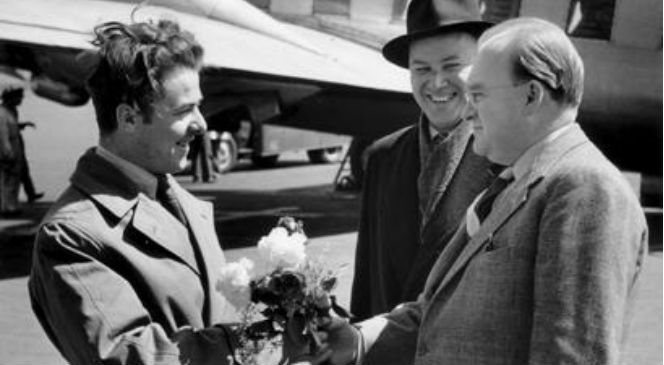

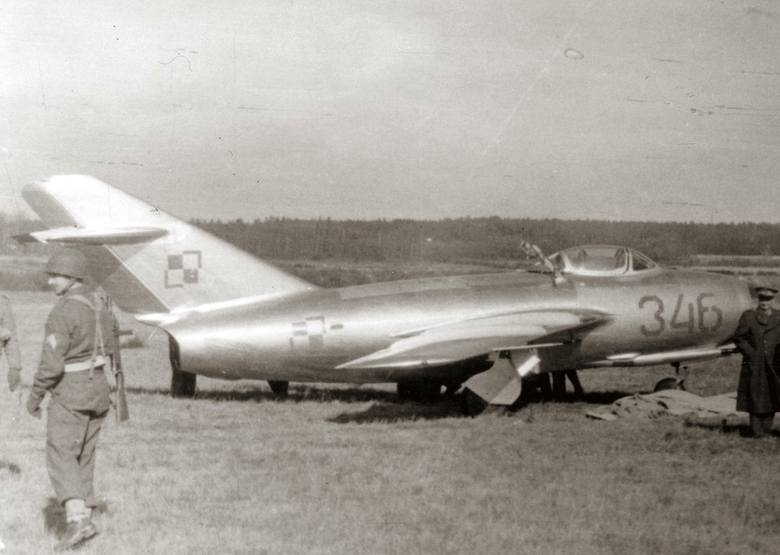
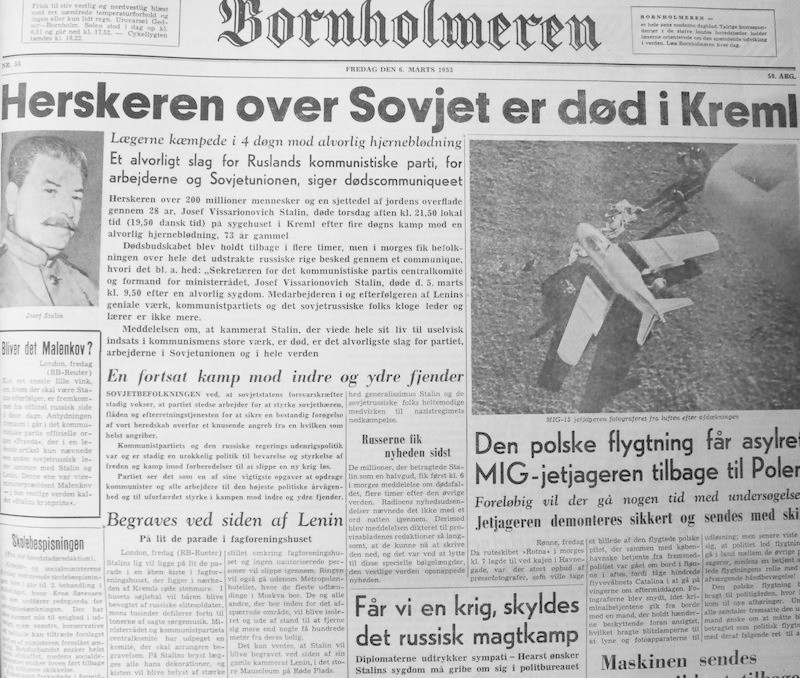
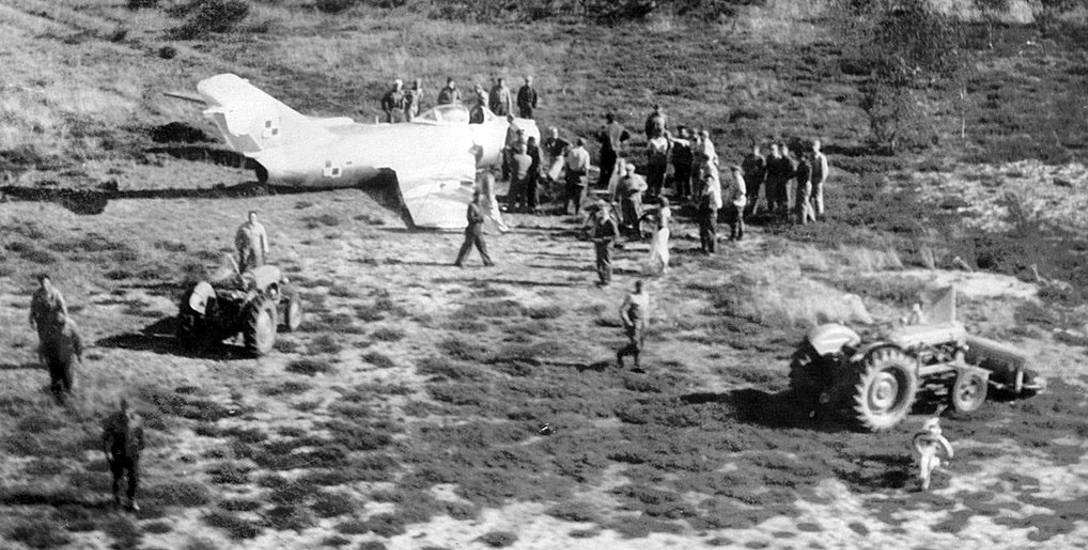
But most spectacular cases were the hijackings of big passenger planes of Polish airlines. Hijackers typically chose the German airport Tempelhof in West Berlin. A dozen or so events of that sort gave rise to multiple jokes and anecdotes.
www.porta-polonica.de/en/Atlas-of-remembrance-places/lot-tempelhof
In the early 1980s no less than seven aircraft belonging to the Polish airline PLL LOT were hijacked to Tempelhof airport in what was then West Berlin. This was not only because of its proximity to Poland but also because of the hopeless economic situation in Socialist Poland combined with strict travel prohibitions. This happened so often that some citizens of Berlin jokingly referred to PLL LOT in their local jargon as “Also lands a lot in Tempelhof”. The more serious newspapers were quite happy to steal the joke for their own articles.
There were also a great many jokes in Poland about the numerous airline hijacks, viz. “a passenger boards a LOT flight in Warsaw. Before the takeoff he asks the pilot what the destination is. “Breslau” is the snappy answer. The passenger pulls a face and replies “Yeah, yeah. That’s what the other three pilots told me, and every time I landed in Tempelhof”.”
It’s easy to smile about such jokes but the hijacks bore witness to the fate of many people who were suffering from the political and economic situation in Poland. The greatest wave of hijacks occurred during the years shortly before and after the introduction of martial law in Poland. Many people risked their lives, their existence and their future to flee from socialist Poland. These included individuals, complete families, groups of friends, Polish pilots and even, in the 1980s, armed air-traffic control officials.
On Friday 30th April 1982 fifty-four passengers in Warsaw boarded a LOT aircraft (type An-24) to fly to Wrocław (Breslau). 36 of them already knew in advance where they wanted to fly because they had been briefed that the plane was to be hijacked to Nuremberg. They were not armed, but very well-prepared. Several of them had already flown the route between Warsaw and Breslau on many occasions in order to acquaint themselves with the precise situation on board. In this way they had discovered the exact position where the two plain-clothes militia officials would be sitting. (Because there were so many hijacks at the start of the 1980s, it was standard procedure to place security officials and soldiers from a special unit on board.) But the hijackers were also well acquainted with the working procedures of the staff and pilots. They had deliberately planned and chosen 30th April as their date, because 1st May was a socialist public holiday when the attention of the state was completely focussed on preparations for the celebrations. Twenty minutes after takeoff the plotters surprised the officers. One of the hijackers forced his way into the cockpit and ordered the pilots to change their destination to Germany. But there was not enough fuel for them to fly to Nuremberg. The alternative was West Berlin. Despite military threats from two Soviet fighters in the air space over the GDR the LOT machine landed safely in Tempelhof.
After the introduction of martial law Czesław Kudłek, a pilot employed by LOT, was afraid that he would be replaced by military pilots. When he lost his flat in Warsaw and was forced to move to Breslau the situation for his family reached a crisis point. As a result he decided to flee from Poland. On 12th February 1982 he was assigned to pilot a LOT flight from Warsaw to Breslau. There were nineteen passengers on board including his own family and some friends, (parachute jumpers and pilots) whom he had also persuaded to flee. He was dependent on outside help because there were at least four officials sitting on the plane who were responsible for security. At first he managed to persuade them that the change in flight direction was a necessity because military exercises in Breslau made it impossible to land there, and this required him to divert to Szczecin (Stettin). Czesław Kudłek then informed the control tower in Warsaw that the plane had been hijacked. The security officials on board only became suspicious when two East German fighter aircraft and a Soviet combat jet came up alongside the plane in GDR airspace, at which point the officials were overpowered by the passengers. Nonetheless the danger from the fighter aircraft was still present. That said, Czesław Kudłek was an experienced pilot. At first he headed for Schönefeld airport in East Berlin, and when the MiGs noticed this, they withdrew. Shortly before Schönefeld Kudłek flew over the control tower, crossed East Berlin and landed in Tempelhof.
On 22nd November 1982 the pilot Jerzy Mikula was surprised in his cockpit by a hijacker who demanded to be flown to Tempelhof. This was no less than the third time he had experienced a hijack. But this time the hijacker was a twenty-two-year-old ZOMO official (Zmotoryzowane Obwody Milicji Obywatelskiej /the Motorised Reserves of the Civilian Militia), who was responsible for onboard security. He was even an instructor specialising in aircraft hijacks. Although he was carrying a weapon, several grenades and a parachute, thankfully he used none of them. The second official on-board only noticed the situation in Berlin but by then it was too late. Despite shooting the hijacker in the heel he was unable to stop him fleeing to the West.
These are only a few of the fates of the huge amount of people involved in the aircraft hijacks or escapes, depending on which way you define such things. There were also many attempts to escape on board smaller aircraft not belonging to LOT. A huge number of these were unsuccessful. Some of them were stopped before they even took off and some were turned back in the air. Whatever the case, punishment and repression awaited the potential refugees and their families.
Tempelhof airport is not only still a symbol of freedom for Polish citizens. Although there are no more landings here, let alone hijacks, the huge site now belongs to the citizens of Berlin. Here they can find a place of recreation in which to stroll, jog and skate. Today it is very difficult to imagine that today’s “Tempelhof Park” was once the site of dramatic flights from the People’s Republic of Poland.
Nowadays LOT lands completely legally at Berlin-Tegel, but no one jokes about them “landing a lot in Tegel”. This is also a sign of the huge change in European relations during the past few decades.
Adam Gusowski
Additional information:
The police files and press collections in the National archive in Berlin refer to 16 LOT aircraft that were hijacked to Tempelhof. By contrast, in the Tempelhof Air Force archive there are references to only eight hijacked LOT aircraft (in addition to 4 Polish aircraft not belonging to LOT).
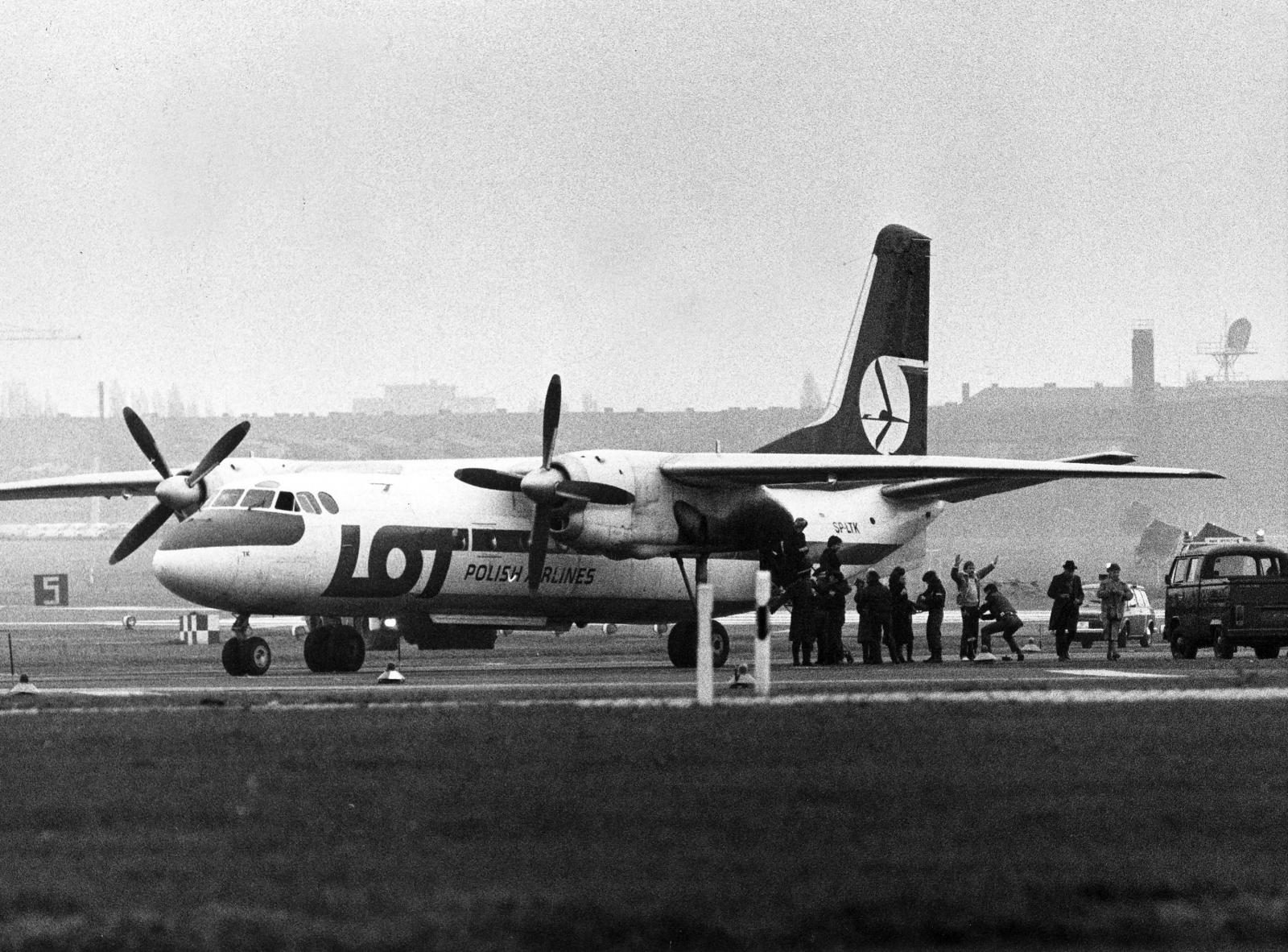

Not only Poles hijacked Polish planes.
en.wikipedia.org/wiki/LOT_Polish_Airlines_Flight_165_hijacking
LOT Polish Airlines Flight 165 hijacking was the hijacking of a LOT Polish Airlines that occurred on 30 August 1978.[1] The hijackers from East Germany (GDR) were seeking political asylum in West Germany (FRG). The plane landed safely, and the primary hijacker was tried and convicted by a West German jury in the specially convened United States Court for Berlin and sentenced to time served, the nine months he had already served during pretrial detention.
Contents
1 Background
2 Hijacking
3 Trial
4 Aftermath
5 In popular culture
6 See also
7 Notes
8 Further reading
9 External links
Background
The GDR citizens Hans Detlef Alexander Tiede (aka Detlev Tiede) and his friend Ingrid Ruske and her 12-year-old daughter had travelled to Poland to meet with Ruske's West German boyfriend Horst Fischer, who had planned to bring forged West German papers to enable their escape by ferry to West German Travemünde.[2] However, Fischer did not turn up, and after four days of waiting for him Ruske and Tiede – not having any information as to his whereabouts – concluded that Fischer must have been arrested when travelling through East Germany.[2] Their conclusion was right, as Fischer had indeed been arrested and would later be sentenced to eight years of jail in East Germany for preparing their Republikflucht ("desertion from the Republic"), a crime under GDR law.
Ruske and Tiede then concluded that they were trapped and that prison awaited them if they returned to East Germany.[2] So they developed a plan to hijack a plane headed for East Berlin's Schönefeld Airport and force a landing at the U.S. Air Force base at Tempelhof Airport in West Berlin.[2] They bought a toy starting pistol at a Polish flea market, and then booked three tickets on LOT Polish Airlines Flight 165 from Gdańsk, Poland, to East Berlin.[3]
Hijacking
On 30 August 1978, Tiede and Ruske hijacked a Polish LOT Tupolev Tu-134 airliner with 62 passengers making Flight 165 from Gdańsk to East Berlin. Tiede, armed with the toy starting pistol, took a flight attendant hostage and succeeded in forcing the aircraft to land at Tempelhof Airport in West Berlin.[4]
Of the 62 passengers, there were 50 GDR citizens, 10 Polish citizens, a man from Munich and a woman from West Berlin. The passengers were given the opportunity to remain in West Berlin or to return to East Berlin. Not only did Tiede, Ruske and her daughter claim sanctuary in West Berlin, but so did another seven East Germans:[4] a radiology assistant from Erfurt, a couple with two children and a couple from Leipzig, although the radiology assistant returned to East Germany the next day.[5] The remaining passengers were interviewed and taken to East Berlin on a bus.[5]
Trial
The West German Federal Government was very reluctant to prosecute Tiede and Ruske because of the West German policy of supporting the right of East Germans to flee oppression in the GDR. But the United States government had just spent years, finally successfully, persuading the East German government to sign a hijacking treaty. Consequently, the case was prosecuted in the never-before-convened United States Court for Berlin.[4][6]
Over the prosecutor's objections, US federal judge Herbert Jay Stern ruled that the defendants were entitled to be tried by a jury, a procedure abolished in Germany by the Emminger Reform of 1924.[2][4] The case against Tiede's co-defendant Ingrid Ruske was dismissed because she had not been notified of her Miranda rights before signing a confession. Tiede was acquitted on three charges, including hijacking and possession of a firearm, but convicted of taking a hostage. The jury found Tiede guilty of hostage-taking, but not guilty of acts against the safety of civil aviation, deprivation of liberty and battery.[2] The minimum sentence for hostage-taking was three years.[2] However, Stern sentenced Tiede to time served during pretrial detention, about nine months.[4] Stern accounted for Tiede's emergency situation and plight to face imprisonment in East Germany for attempted Republikflucht.[2]
Aftermath
Two years after his arrest Fischer was released after the West German federal government had paid a ransom to East Germany. Ruske and Fischer married after his release in West Germany.
In popular culture

The 1984 book which Judge Stern wrote about the event, Judgment in Berlin, was made into a movie in 1988. Martin Sheen depicted him.[7]
Franciszek Jarecki (born September 7, 1931 – died October 24, 2010[1]) was a pilot in the Polish Air Force, who became famous in early 1953 when he escaped Soviet-controlled Poland in a Mikoyan-Gurevich MiG-15 jet, one of the best Soviet planes at that time.
Contents
1 Early life
2 Defection
3 Later life
4 See also
5 References
6 External links
Early life
Jarecki was born in 1931 in Gdów, a town near Kraków. His family soon moved to Stanisławów, where his father died in 1939, and in 1945 was deported by the soviets to Bytom, Upper Silesia. He was a graduate of a prestigious Polish Air Force Academy in Dęblin. Some time in the early 1950s he was moved to Słupsk in northern Poland, near the Baltic Sea. There he flew MiG-15s as a few of them were operated by the Polish Air Force.
Defection
Frank Jarecki's flightsuit on display at the Smithsonian Air and Space Museum
On the morning of March 5, 1953 (coincidentally, the day of Joseph Stalin's death), Jarecki escaped Poland in the SB Lim-2, a licensed-production version of the MiG-15UTI trainer. The decision was a very risky one, as the People's Army of Poland had previously shot those who tried to escape. For example, Edward Pytko, an instructor at Dęblin, tried to escape to Western Germany in 1952, but was stopped by Soviet aircraft over Eastern Germany and handed back to the Poles; Pytko was charged with high treason and executed.[2] Jarecki flew from Slupsk to the field airport at Rønne on the Danish island of Bornholm. The whole trip took him only a few minutes. There, specialists from the United States, called by Danish authorities, thoroughly checked the plane. According to international regulations, they returned it by ship to Poland a few weeks later.
Jarecki remained in the West. From Denmark he moved to London, where General Władysław Anders awarded him the Cross of Merit, and then to the U.S.A., where he provided crucial information about modern Soviet aircraft and air tactics. Among those who shook his hand was President Dwight D. Eisenhower. Jarecki received a $50,000 prize for the person who was first to present a MiG-15 to the Americans and became a U.S. citizen.[3]
A propaganda leaflet featuring Jarecki's story, produced shortly after his defection, encouraging North Korean pilots to defect with their jet fighters. The first to do so would get $100,000 as a reward. North Korean pilot No Kum-Sok eventually claimed the $100,000 reward for doing so in Operation Moolah
A few months later, another Polish pilot, Zdzisław Jazwinski escaped with a MiG-15 to Bornholm. Three years later, four students of Dęblin's school escaped in two Yakovlev Yak-18 planes, crossing Czechoslovakia to land near Vienna in neutral Austria. The leaflets used in Operation Moolah during the Korean War carried a photo of Jarecki.[4]
Later life
Jarecki lived in Pennsylvania until his death on October 24, 2010. He owned a factory in Fairview, Pennsylvania, called Jarecki Valves and Commodore Downs a local horse racing track.[5] The uniform in which he escaped can be seen at the National Air and Space Museum in Washington, D.C. In 2006, Polish TV Station TVN made a film, Jarecki, which is part of the "Great Escapes" series. The series shows stories about Poles who escaped the country between 1944–1989 and chose freedom in the West.[6]





But most spectacular cases were the hijackings of big passenger planes of Polish airlines. Hijackers typically chose the German airport Tempelhof in West Berlin. A dozen or so events of that sort gave rise to multiple jokes and anecdotes.
www.porta-polonica.de/en/Atlas-of-remembrance-places/lot-tempelhof
In the early 1980s no less than seven aircraft belonging to the Polish airline PLL LOT were hijacked to Tempelhof airport in what was then West Berlin. This was not only because of its proximity to Poland but also because of the hopeless economic situation in Socialist Poland combined with strict travel prohibitions. This happened so often that some citizens of Berlin jokingly referred to PLL LOT in their local jargon as “Also lands a lot in Tempelhof”. The more serious newspapers were quite happy to steal the joke for their own articles.
There were also a great many jokes in Poland about the numerous airline hijacks, viz. “a passenger boards a LOT flight in Warsaw. Before the takeoff he asks the pilot what the destination is. “Breslau” is the snappy answer. The passenger pulls a face and replies “Yeah, yeah. That’s what the other three pilots told me, and every time I landed in Tempelhof”.”
It’s easy to smile about such jokes but the hijacks bore witness to the fate of many people who were suffering from the political and economic situation in Poland. The greatest wave of hijacks occurred during the years shortly before and after the introduction of martial law in Poland. Many people risked their lives, their existence and their future to flee from socialist Poland. These included individuals, complete families, groups of friends, Polish pilots and even, in the 1980s, armed air-traffic control officials.
On Friday 30th April 1982 fifty-four passengers in Warsaw boarded a LOT aircraft (type An-24) to fly to Wrocław (Breslau). 36 of them already knew in advance where they wanted to fly because they had been briefed that the plane was to be hijacked to Nuremberg. They were not armed, but very well-prepared. Several of them had already flown the route between Warsaw and Breslau on many occasions in order to acquaint themselves with the precise situation on board. In this way they had discovered the exact position where the two plain-clothes militia officials would be sitting. (Because there were so many hijacks at the start of the 1980s, it was standard procedure to place security officials and soldiers from a special unit on board.) But the hijackers were also well acquainted with the working procedures of the staff and pilots. They had deliberately planned and chosen 30th April as their date, because 1st May was a socialist public holiday when the attention of the state was completely focussed on preparations for the celebrations. Twenty minutes after takeoff the plotters surprised the officers. One of the hijackers forced his way into the cockpit and ordered the pilots to change their destination to Germany. But there was not enough fuel for them to fly to Nuremberg. The alternative was West Berlin. Despite military threats from two Soviet fighters in the air space over the GDR the LOT machine landed safely in Tempelhof.
After the introduction of martial law Czesław Kudłek, a pilot employed by LOT, was afraid that he would be replaced by military pilots. When he lost his flat in Warsaw and was forced to move to Breslau the situation for his family reached a crisis point. As a result he decided to flee from Poland. On 12th February 1982 he was assigned to pilot a LOT flight from Warsaw to Breslau. There were nineteen passengers on board including his own family and some friends, (parachute jumpers and pilots) whom he had also persuaded to flee. He was dependent on outside help because there were at least four officials sitting on the plane who were responsible for security. At first he managed to persuade them that the change in flight direction was a necessity because military exercises in Breslau made it impossible to land there, and this required him to divert to Szczecin (Stettin). Czesław Kudłek then informed the control tower in Warsaw that the plane had been hijacked. The security officials on board only became suspicious when two East German fighter aircraft and a Soviet combat jet came up alongside the plane in GDR airspace, at which point the officials were overpowered by the passengers. Nonetheless the danger from the fighter aircraft was still present. That said, Czesław Kudłek was an experienced pilot. At first he headed for Schönefeld airport in East Berlin, and when the MiGs noticed this, they withdrew. Shortly before Schönefeld Kudłek flew over the control tower, crossed East Berlin and landed in Tempelhof.
On 22nd November 1982 the pilot Jerzy Mikula was surprised in his cockpit by a hijacker who demanded to be flown to Tempelhof. This was no less than the third time he had experienced a hijack. But this time the hijacker was a twenty-two-year-old ZOMO official (Zmotoryzowane Obwody Milicji Obywatelskiej /the Motorised Reserves of the Civilian Militia), who was responsible for onboard security. He was even an instructor specialising in aircraft hijacks. Although he was carrying a weapon, several grenades and a parachute, thankfully he used none of them. The second official on-board only noticed the situation in Berlin but by then it was too late. Despite shooting the hijacker in the heel he was unable to stop him fleeing to the West.
These are only a few of the fates of the huge amount of people involved in the aircraft hijacks or escapes, depending on which way you define such things. There were also many attempts to escape on board smaller aircraft not belonging to LOT. A huge number of these were unsuccessful. Some of them were stopped before they even took off and some were turned back in the air. Whatever the case, punishment and repression awaited the potential refugees and their families.
Tempelhof airport is not only still a symbol of freedom for Polish citizens. Although there are no more landings here, let alone hijacks, the huge site now belongs to the citizens of Berlin. Here they can find a place of recreation in which to stroll, jog and skate. Today it is very difficult to imagine that today’s “Tempelhof Park” was once the site of dramatic flights from the People’s Republic of Poland.
Nowadays LOT lands completely legally at Berlin-Tegel, but no one jokes about them “landing a lot in Tegel”. This is also a sign of the huge change in European relations during the past few decades.
Adam Gusowski
Additional information:
The police files and press collections in the National archive in Berlin refer to 16 LOT aircraft that were hijacked to Tempelhof. By contrast, in the Tempelhof Air Force archive there are references to only eight hijacked LOT aircraft (in addition to 4 Polish aircraft not belonging to LOT).


Not only Poles hijacked Polish planes.
en.wikipedia.org/wiki/LOT_Polish_Airlines_Flight_165_hijacking
LOT Polish Airlines Flight 165 hijacking was the hijacking of a LOT Polish Airlines that occurred on 30 August 1978.[1] The hijackers from East Germany (GDR) were seeking political asylum in West Germany (FRG). The plane landed safely, and the primary hijacker was tried and convicted by a West German jury in the specially convened United States Court for Berlin and sentenced to time served, the nine months he had already served during pretrial detention.
Contents
1 Background
2 Hijacking
3 Trial
4 Aftermath
5 In popular culture
6 See also
7 Notes
8 Further reading
9 External links
Background
The GDR citizens Hans Detlef Alexander Tiede (aka Detlev Tiede) and his friend Ingrid Ruske and her 12-year-old daughter had travelled to Poland to meet with Ruske's West German boyfriend Horst Fischer, who had planned to bring forged West German papers to enable their escape by ferry to West German Travemünde.[2] However, Fischer did not turn up, and after four days of waiting for him Ruske and Tiede – not having any information as to his whereabouts – concluded that Fischer must have been arrested when travelling through East Germany.[2] Their conclusion was right, as Fischer had indeed been arrested and would later be sentenced to eight years of jail in East Germany for preparing their Republikflucht ("desertion from the Republic"), a crime under GDR law.
Ruske and Tiede then concluded that they were trapped and that prison awaited them if they returned to East Germany.[2] So they developed a plan to hijack a plane headed for East Berlin's Schönefeld Airport and force a landing at the U.S. Air Force base at Tempelhof Airport in West Berlin.[2] They bought a toy starting pistol at a Polish flea market, and then booked three tickets on LOT Polish Airlines Flight 165 from Gdańsk, Poland, to East Berlin.[3]
Hijacking
On 30 August 1978, Tiede and Ruske hijacked a Polish LOT Tupolev Tu-134 airliner with 62 passengers making Flight 165 from Gdańsk to East Berlin. Tiede, armed with the toy starting pistol, took a flight attendant hostage and succeeded in forcing the aircraft to land at Tempelhof Airport in West Berlin.[4]
Of the 62 passengers, there were 50 GDR citizens, 10 Polish citizens, a man from Munich and a woman from West Berlin. The passengers were given the opportunity to remain in West Berlin or to return to East Berlin. Not only did Tiede, Ruske and her daughter claim sanctuary in West Berlin, but so did another seven East Germans:[4] a radiology assistant from Erfurt, a couple with two children and a couple from Leipzig, although the radiology assistant returned to East Germany the next day.[5] The remaining passengers were interviewed and taken to East Berlin on a bus.[5]
Trial
The West German Federal Government was very reluctant to prosecute Tiede and Ruske because of the West German policy of supporting the right of East Germans to flee oppression in the GDR. But the United States government had just spent years, finally successfully, persuading the East German government to sign a hijacking treaty. Consequently, the case was prosecuted in the never-before-convened United States Court for Berlin.[4][6]
Over the prosecutor's objections, US federal judge Herbert Jay Stern ruled that the defendants were entitled to be tried by a jury, a procedure abolished in Germany by the Emminger Reform of 1924.[2][4] The case against Tiede's co-defendant Ingrid Ruske was dismissed because she had not been notified of her Miranda rights before signing a confession. Tiede was acquitted on three charges, including hijacking and possession of a firearm, but convicted of taking a hostage. The jury found Tiede guilty of hostage-taking, but not guilty of acts against the safety of civil aviation, deprivation of liberty and battery.[2] The minimum sentence for hostage-taking was three years.[2] However, Stern sentenced Tiede to time served during pretrial detention, about nine months.[4] Stern accounted for Tiede's emergency situation and plight to face imprisonment in East Germany for attempted Republikflucht.[2]
Aftermath
Two years after his arrest Fischer was released after the West German federal government had paid a ransom to East Germany. Ruske and Fischer married after his release in West Germany.
In popular culture

The 1984 book which Judge Stern wrote about the event, Judgment in Berlin, was made into a movie in 1988. Martin Sheen depicted him.[7]






